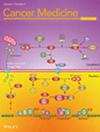Individualized Prognostic Insights: CONUT-GBRS for Survival Prediction in Gallbladder Cancer
Abstract
Background
The most suitable prognostic prediction system for gallbladder cancer (GBC) is yet to be determined. This study aims to establish a combined score integrating preoperative patients' nutritional and immune status and pathological parameters to forecast the survival outcomes following curative-intent surgery of GBC.
Methods
This retrospective study included patients diagnosed with GBC based on postoperative pathological examinations. The patients underwent curative surgery at West China Hospital of Sichuan University (China) between January 2014 and December 2022. Using the controlling nutritional status (CONUT) score and gallbladder cancer predictive risk score (GBRS), we generated the CONUT-GBRS for every patient, and the patients were divided into two groups based on the optimal cutoff value. Comparisons were made between the two groups regarding clinicopathologic features and survival.
Results
The optimal cutoff value for the CONUT-GBRS was 1.39. There were 99 and 201 individuals in the high and low CONUT-GBRS groups, respectively. Patients with high CONUT-GBRS experienced poorer overall survival and disease-free survival compared with those with low CONUT-GBRS, even after propensity score matching analysis. Both univariate and multivariate Cox analyses established that CONUT-GBRS stood as an independent prognostic factor for GBC patients. Subgroup analysis indicated that CONUT-GBRS was also an effective predictor of prognosis in patients with incidental GBC.
Conclusion
The CONUT-GBRS serves as an advantageous, straightforward, and cost-effective prognostic tool for GBC, offering valuable prognostic insights and guiding the tailoring of individualized treatment strategies to improve patient outcomes.


 求助内容:
求助内容: 应助结果提醒方式:
应助结果提醒方式:


